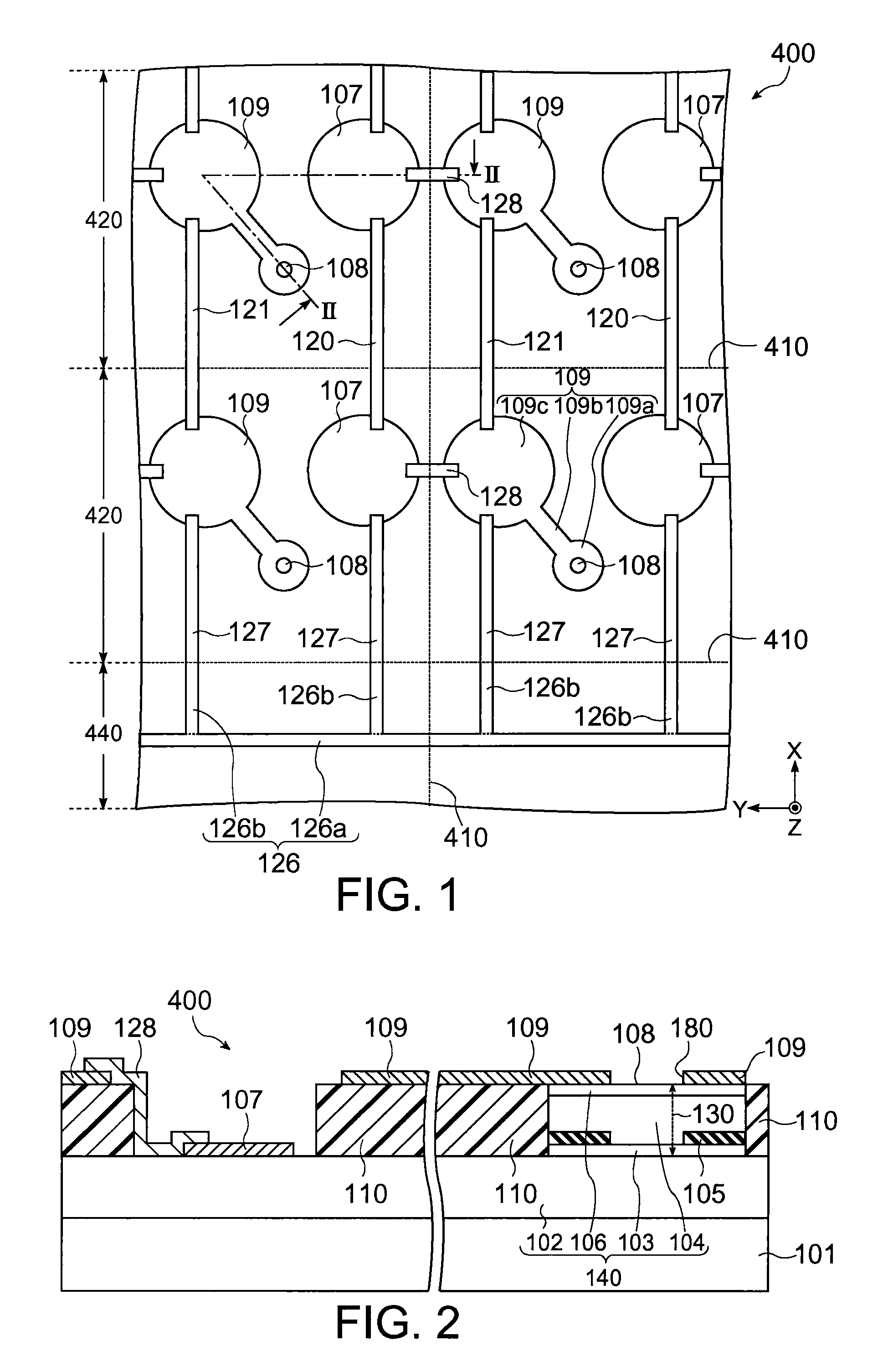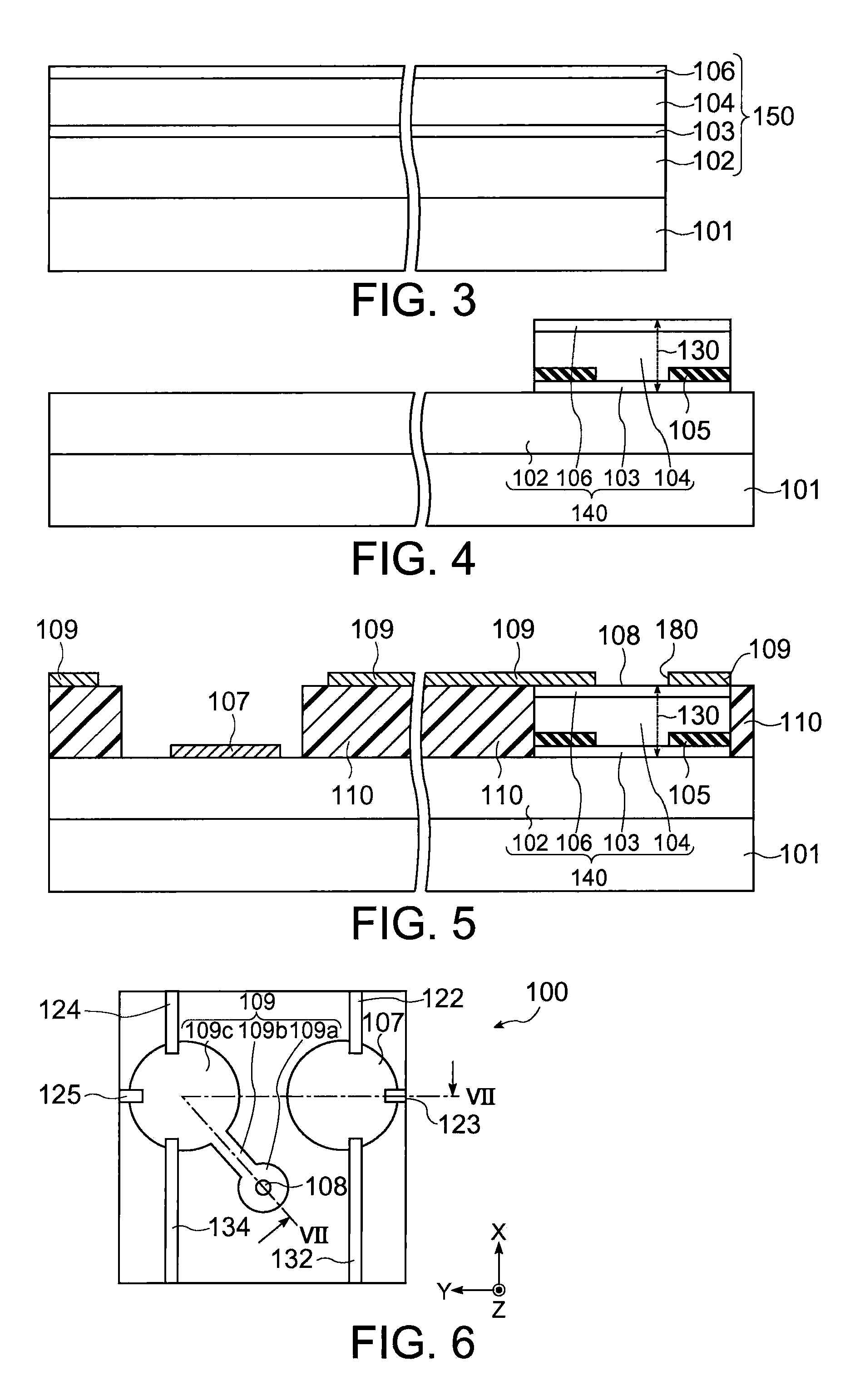Optical device wafer, and optical device chip and method for manufacturing the same
a technology of optical devices and optical wafers, applied in the direction of optical elements, instruments, semiconductor lasers, etc., can solve the problems of long lamination layer time, device damage, and limited measures, so as to prevent electrostatic destruction and improve reliability.
- Summary
- Abstract
- Description
- Claims
- Application Information
AI Technical Summary
Benefits of technology
Problems solved by technology
Method used
Image
Examples
Embodiment Construction
[0029]Preferred embodiments of the invention are described below with reference to the accompanying drawings.
[0030]1. First, an optical device wafer 400 in accordance with an embodiment of the invention is described.
[0031]FIG. 1 schematically shows a plan view of the optical device wafer 400 in accordance with the present embodiment, and FIG. 2 is a cross-sectional view taken along lines II-II of FIG. 1. In the present embodiment, an example in which the optical device wafer 400 is a surface-emitting type semiconductor laser wafer is described.
[0032]The optical device wafer400 may include a plurality of chip regions 420, connecting sections 120, 121 and 128, and a region 440 (non-chip region) other than the chip regions 420. It is noted that FIG. 4 shows four chip regions 420 for the sake of convenience, but the number of the chip regions 420 is not particularly limited.
[0033]Each of the chip regions 420 may include a substrate 101, an optical section (a light emitting section) 140,...
PUM
 Login to View More
Login to View More Abstract
Description
Claims
Application Information
 Login to View More
Login to View More - R&D
- Intellectual Property
- Life Sciences
- Materials
- Tech Scout
- Unparalleled Data Quality
- Higher Quality Content
- 60% Fewer Hallucinations
Browse by: Latest US Patents, China's latest patents, Technical Efficacy Thesaurus, Application Domain, Technology Topic, Popular Technical Reports.
© 2025 PatSnap. All rights reserved.Legal|Privacy policy|Modern Slavery Act Transparency Statement|Sitemap|About US| Contact US: help@patsnap.com



